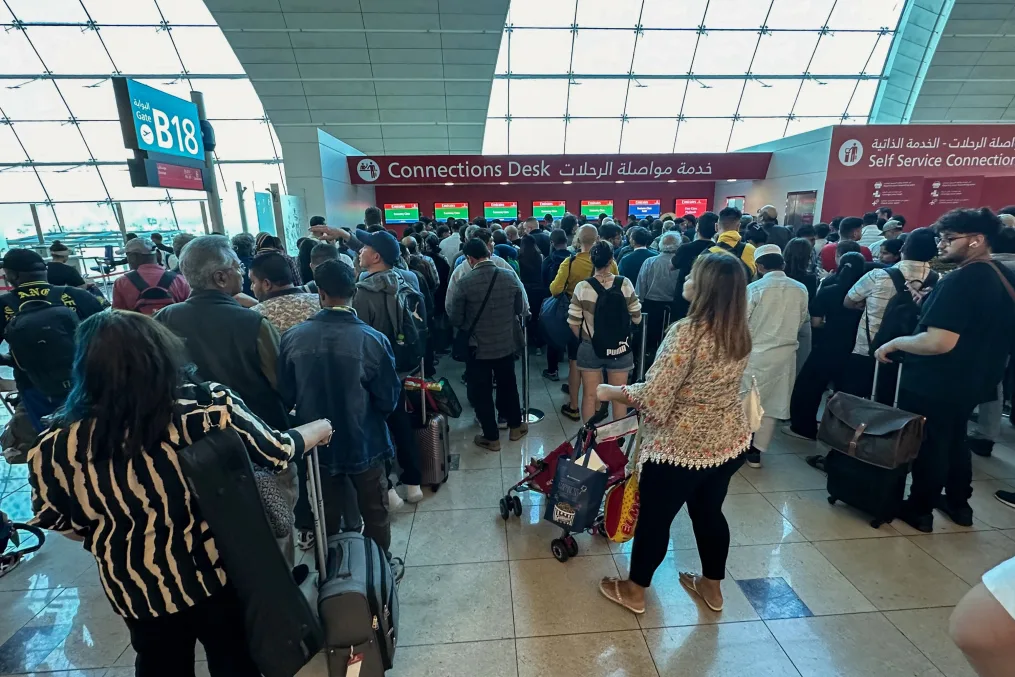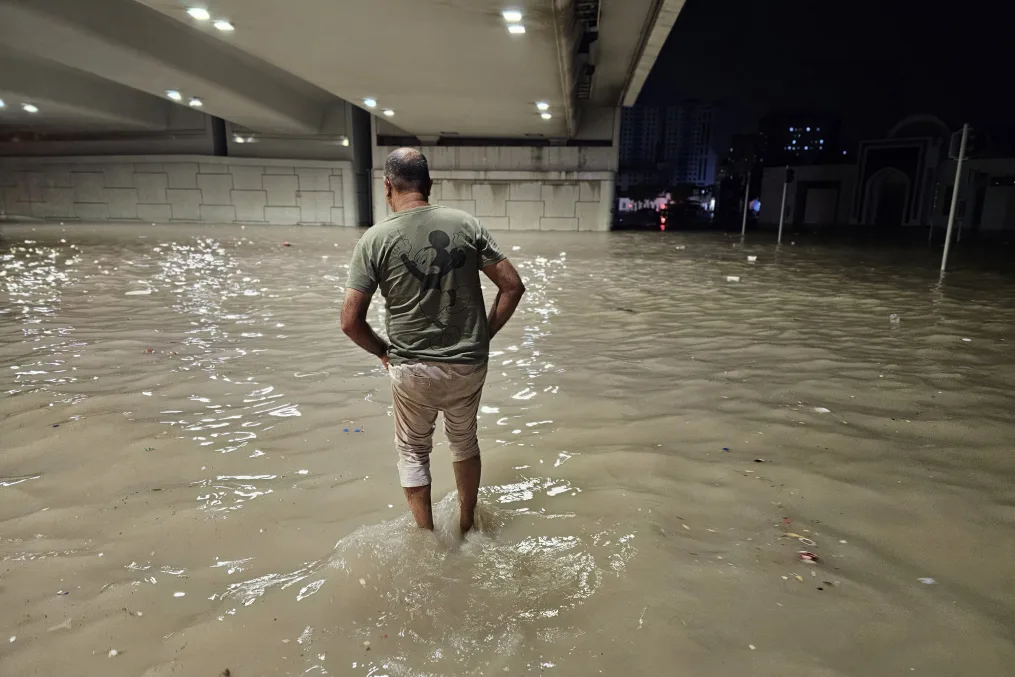The United Arab Emirates has witnessed its heaviest rainfall in 75 years.
The rains began on Monday night and by Tuesday evening more than 142mm (5.59in) had soaked the desert city of Dubai – normally the amount it gets in a year and a half.
At least one person was killed, a 70-year-old man who police said was swept away in his car in Ras Al Khaimah, one of the UAE’s seven emirates.
People attempting to travel by road into the center of Dubai on Wednesday, April 17, 2024, were trapped on the city’s highway.
Some taxi drivers refused to take the commuters any further due to the blocked roads, rendering them stuck on the main artery in Dubai.
Rain is unusual in the UAE but occurs periodically during the cooler winter months.
Homes were flooded and vehicles were abandoned on roadways across Dubai, and authorities sent tanker trucks into the streets to pump away the water.
Many roads and other areas lack drainage given the rarity of regular rainfall.
The Dubai international airport said that it had experienced “significant disruption.”

EgyptAir suspended flights between Cairo and Dubai until the conditions improve.
On Wednesday morning, Dubai International Airport advised people not to come to the airport, unless absolutely necessary,” saying that flights continue to be delayed and diverted.
Emirates suspended check-in for passengers departing Dubai from 8 a.m. local time on Wednesday until midnight on Thursday, April 18, 2024, due to “operational challengers caused by bad weather and road conditions.”
Paul Griffiths, the airport’s CEO, noted that the situation remained incredibly challenging.
“In living memory, I don’t think anyone has ever seen conditions like it,” he told the state-owned radio station.
He added, “We are in uncharted territory.”
The rainfall continued to shift east on Wednesday, impacting parts of southern Iran and Pakistan, areas that see little rainfall this time of year. Iran’s southernmost city of Chabahar, in the Sistan and Baluchestan province, recorded 130 mm of rain.
Heavy rain also fell in Bahrain, Qatar, Saudi Arabia and Oman
Cloud Seeding Rumours Debunked

Some media reports suggested that the rains may have been made worse by cloud seeding, a common practice in the Emirates to encourage clouds to produce precipitation by releasing salt particles into the air, often using planes.
The salt released in cloud-seeding operations helps water droplets to form, increasing the chance of rain.
However, the National Center of Meteorology (NCM), which oversees cloud-seeding operations in the UAE, told a news agency that no missions had been dispatched for seeding operations before or during the turbulent weather episode.
Omar Al Yazeedi, the Deputy Director-General of the NCM, said, “We did not engage in any seeding operations during this particular weather event.”
“The essence of cloud seeding lies in targeting clouds at an earlier stage, prior to precipitation. Engaging in seeding activities during a severe thunderstorm scenario would prove futile.”
Omar Al Yazeedi
Maarten Ambaum, a Professor of atmospheric physics and dynamics at the University of Reading, also said that he had spoken to meteorologists at the NCM who had denied cloud seeding had taken place.
“Cloud seeding, certainly in the Emirates, is used for clouds that don’t normally produce rain … You would not normally develop a very severe storm out of that,” he said, adding that it would be “totally pointless” to try to seed clouds that were already likely to produce downpours.
Ambaum noted that the world should expect more extreme weather events.
He said, “We have been saying for several decades now that in a changing climate we will probably get more of these kinds of severe events, and indeed this is happening.”
READ ALSO: Ghana’s Informal Workers Left Behind





















